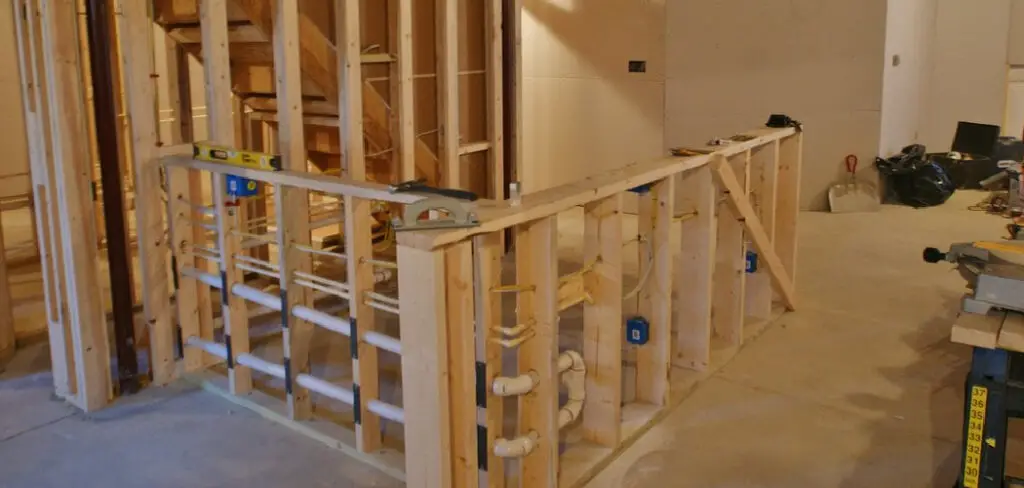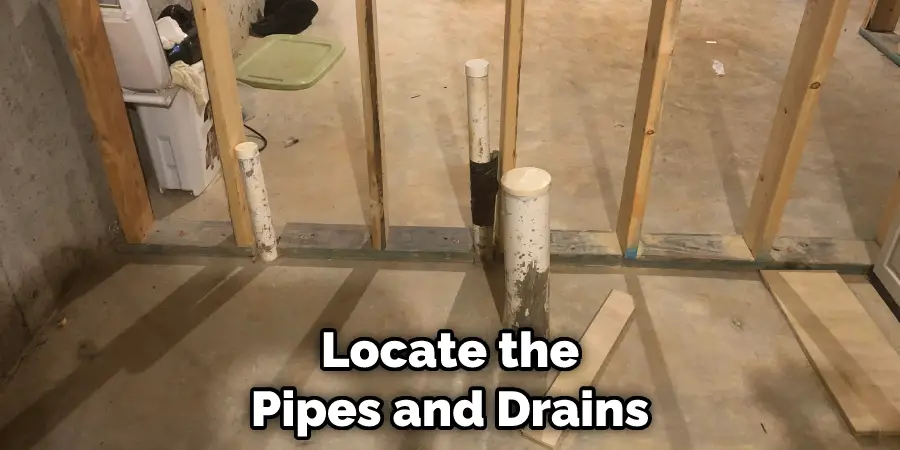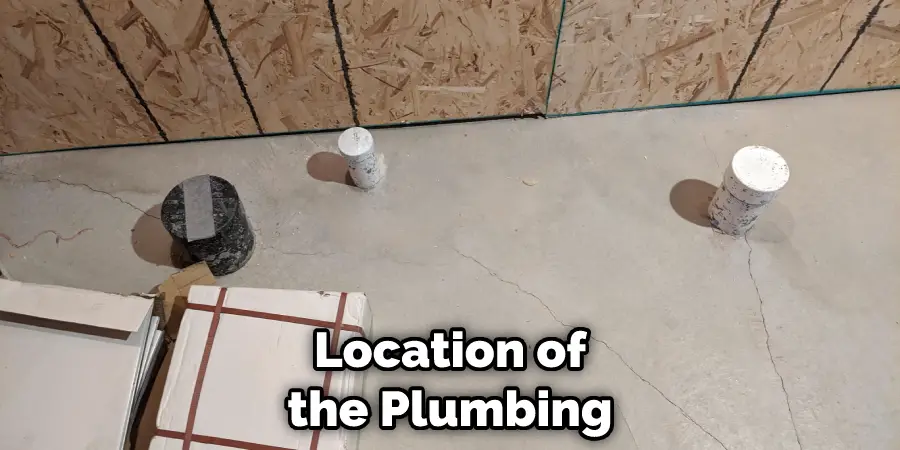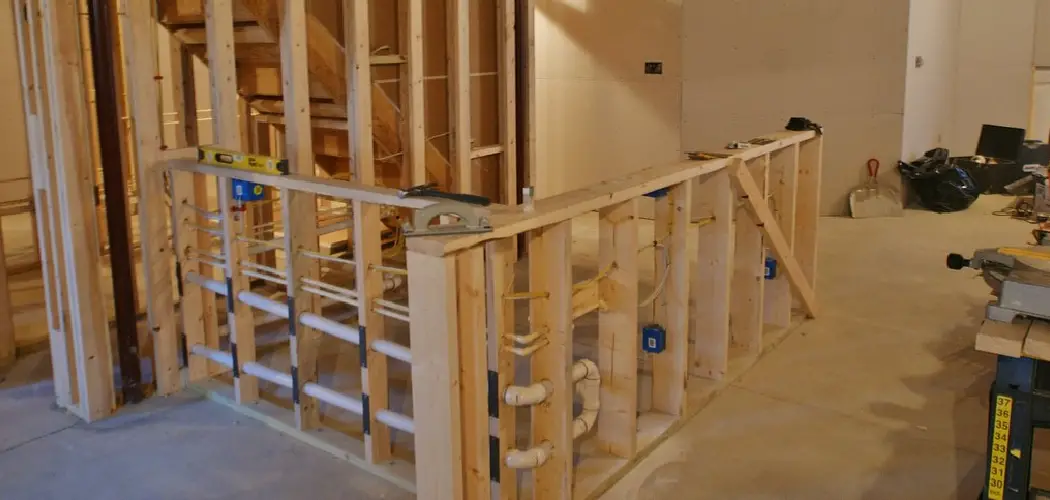Rough-in plumbing is one of the essential processes in a building project. It sets the foundation for water supply and the removal of wastewater for homes or commercial buildings.

Identifying rough-in plumbing in the basement may not be the easiest or most exciting thing to do.
However, it is crucial to understand the condition of your plumbing systems. In this post, we will take you through the process how to identify rough-in plumbing in basement and the steps you can take to ensure the proper functioning of your plumbing system.
Can You Identify Rough-In Plumbing in The Basement?
Navigating the intricacies of a home’s plumbing system can be daunting, especially when it comes to the often-overlooked rough-in plumbing. While this system may be out of sight and out of mind for most homeowners, it plays a critical role in the proper functioning of a property’s plumbing. Specifically, rough-in plumbing refers to installing pipes and drain lines before installing sinks, tubs, and toilets in a home.
Identifying these pipes and lines in the basement can be particularly challenging, as they often blend in with the surroundings. However, by understanding the basics of rough-in plumbing and working with an experienced professional, homeowners can ensure that their plumbing systems are in good working order and avoid costly repairs down the line.
Why Should You Identify Rough-In Plumbing in The Basement?
Identifying rough-in plumbing in your basement is an important step in planning any renovations or upgrades to your home. Understanding where the plumbing is located can make the process much smoother and more efficient, potentially saving you time and money in the long run.
Additionally, identifying any issues with the plumbing early on can prevent costly and inconvenient problems down the line. Whether you’re planning to remodel your basement into a livable space or simply want to update your existing plumbing, locating and understanding rough-in plumbing is a wise investment for any homeowner.
7 Steps to Follow on How to Identify Rough-In Plumbing in Basement
Step 1. Look for Pipes and Drains

One of the easiest ways to identify rough-in plumbing in your basement is to locate the pipes and drains that run along the basement walls and floors. The pipes will most likely be PVC or copper and will be sticking out of the concrete foundation.
The drain lines will go down into the foundation and may have a PVC or cast iron material. If your basement is unfinished, these pipes and drains might be visible, but if it is finished, they will be covered by drywall or ceiling tiles.
Step 2. Look for The Vent Pipes
Vent pipes are an essential part of any plumbing system. They allow the air to escape from the drain and maintain the right pressure in the plumbing system.
These pipes will be about 2-3 inches in diameter and will protrude through your home’s roof. In your basement, you can find vent pipes running up the walls, and they will be joined to your drainage pipes and start at the basement floor.
Step 3. Locate the Water Supply Lines
The supply lines are the pipes that bring water from the main source (usually the city water supply) into your home. In your basement, look for copper or plastic pipes that run along the walls, and they will likely enter your home in the basement or near the foundation. Remember that these lines will only be present if the home already has plumbing installed.
Step 4. Check Your Basement Layout
Understanding the layout of your basement can help you get an idea of where the pipes will be running. The bathroom will often have pipes running along the walls, leading to the main sewer line. If you have a kitchen in your basement, the kitchen sink’s presence and the pipe opening below the sink will indicate rough-in plumbing.
Step 5. Seek Professional Help

If you can’t identify your rough-in plumbing on your own, it’s always best to seek professional help. Experienced plumbers can help you locate, inspect and advise on issues concerning rough-in plumbing in your basement.
They can also ensure that your pipes and drains are correctly installed and the pressure in your plumbing system does not result in any issues.
Step 6. Inspect the Area Carefully
Slowly and carefully inspect the area, paying close attention to any pipes and drains that may be present in your basement. Make sure all pipes are correctly connected to each other and there are no signs of corrosion or blockages.
It’s also important to watch for any signs of water leakage or dampness in your walls, as these could indicate plumbing issues.
Step 7. Perform a Pressure Test
If you’re still not sure if the pipes and drains are correctly installed, it’s best to perform a pressure test. This will help you identify any leaks in your system that might not be immediately visible. A professional plumber can do a pressure test, but you can also do it yourself with the right tools and knowledge.
With these steps, you should now have an idea of how to identify rough-in plumbing in basement. Remember that it’s always best to seek professional help if you’re unsure or not confident in identifying the pipes and drains yourself. Also, don’t forget to check your local building codes and regulations when installing or repairing any pipes in your home. Good luck!
5 Considerations Things When You Need to Identify Rough-In Plumbing in The Basement
1. The Location of the Rough-In Plumbing
One of the most important considerations when identifying rough-in plumbing is the location of the plumbing. The location of the rough-in plumbing will determine how easy or difficult it will be to access the plumbing for repairs or replacement.

If the rough-in plumbing is located in an easily accessible area, it will be much easier to work on than if it is located in a difficult-to-reach area.
2. The Type of Pipe Used
Another consideration when identifying rough-in plumbing is the type of pipe used. The type of pipe used can significantly impact the cost and difficulty of repairs or replacement. If the wrong type of pipe is used, it can lead to expensive and time-consuming repairs.
3. The Size of the Pipe
The size of the pipe is another important consideration when identifying rough-in plumbing. The size of the pipe will determine how much water can flow through the plumbing and how big the pipes need to be for repairs or replacement. If the wrong size pipe is used, it can lead to expensive and time-consuming repairs.
4. The Condition of the Pipe
The condition of the pipe is another important consideration when identifying rough-in plumbing. If the pipe is in good condition, it will be much easier to work on than if it is in bad condition. If the pipe is in bad condition, it may need to be replaced entirely, which can be very costly and time-consuming.
5. The Age of the Pipe
The age of the pipe is another important consideration when identifying rough-in plumbing. Older pipes may be more likely to need repairs or replacement than newer pipes.
Benefits of Identifying Rough-In Plumbing in The Basement
Identifying rough-in plumbing can be a game changer when it comes to finishing your basement. It will save you a headache down the line and give you a better understanding of what you can and cannot do with the space. By knowing where the pipes and drains are located, you’ll be able to plan and design your layout easily.
This means you’ll be able to avoid costly mistakes such as drilling into pipes or having to reroute the plumbing. Ultimately, identifying the rough-in plumbing can make your basement renovation more efficient and cost-effective while also giving you peace of mind.
Some Common Mistakes People Make When Trying to Identify Rough-In Plumbing in The Basement
Identifying rough-in plumbing in the basement can be challenging for many homeowners. While it may seem easy at first glance, there are a lot of things that can go wrong in the process.

Some common mistakes that people make while identifying rough-in plumbing include assuming that all pipes are water supply lines, failing to locate key fixtures such as toilets and sinks, and not accounting for differences in pipe sizes.
To avoid these pitfalls, taking your time and carefully examining the plumbing layout is essential. Don’t hesitate to seek the advice of a professional if needed to ensure that your project goes smoothly and without any costly mistakes.
Conclusion
Identifying rough-in plumbing in your basement requires a bit of knowledge about plumbing systems. Knowing the key components of plumbing systems, such as pipes, drains, vent pipes, and water supply lines, can help make identification easy.
It is best to seek professional help when in doubt and keep the rough-in plumbing system in check to ensure proper functioning. With the right guidance, you can identify rough-in plumbing and ensure your pipes and drains are installed correctly and your plumbing system remains in good condition.
Thanks for reading our post about how to identify rough-in plumbing in basement.


